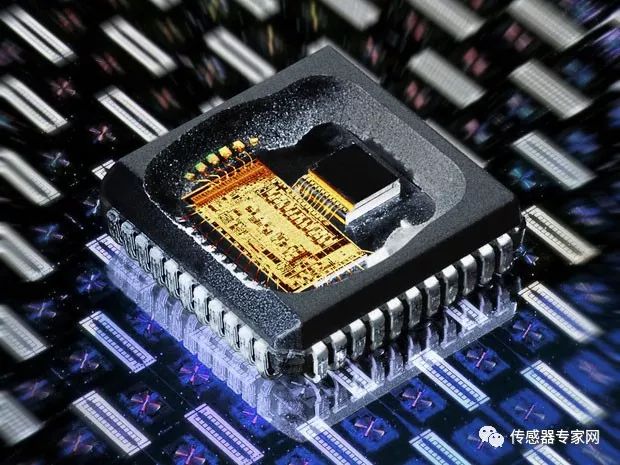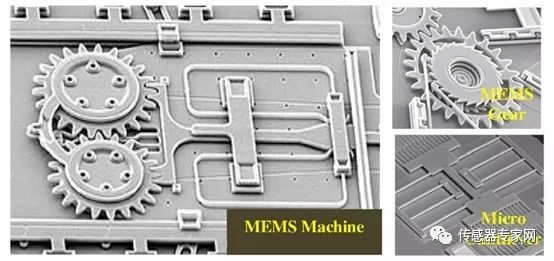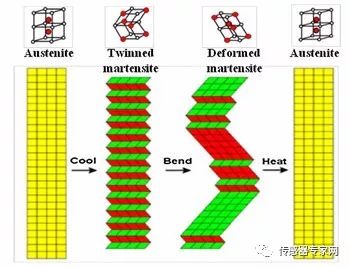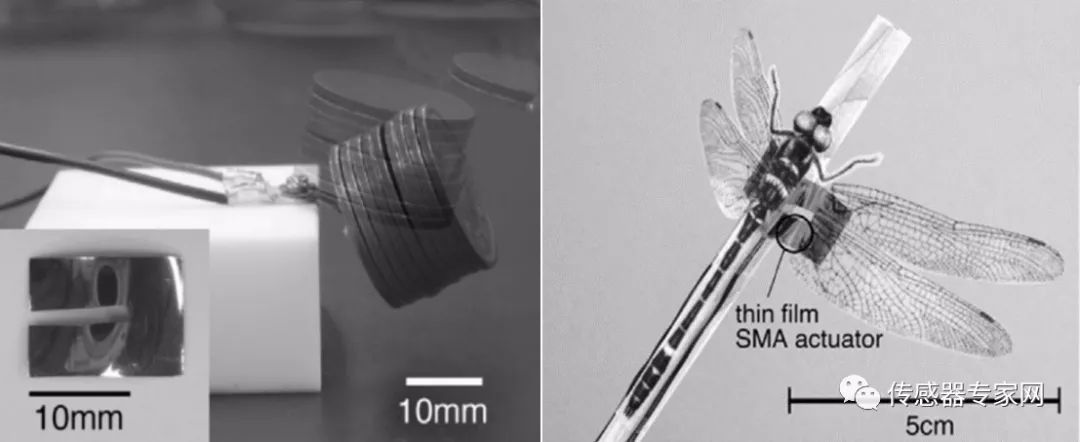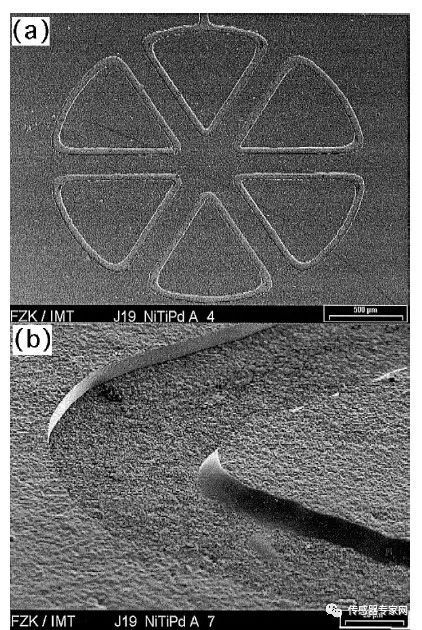Creatures have memories, but do you believe that objects without life can also have memories? After bending a piece of metal plate with external force and heating it again, you can be surprised to find that it magically changes back to the original shape. This is the shape memory alloy. In recent years, interesting properties of memory alloys have attracted attention because they are widely used in MEMS, and they have been widely used in medical and aerospace fields. Sensor chip using MEMS technology, data diagram MEMS (Micro Electro Mechanical Systems) is an integrated discipline that involves micro-machining technology, mechanics, electronics, and more. MEMS devices range in size from 1 mm to 1 μm. Their main advantages are their small size, light weight, low power consumption, high reliability, high sensitivity, and ease of integration. They are the main force of miniature sensors and are gradually replacing traditional machinery. Sensors are used in many fields such as consumer electronics, automotive industry, aerospace, machinery, chemical engineering, and pharmaceuticals. At present, common MEMS sensor products include pressure sensors, acceleration sensors, gyroscopes, electrostatically actuated light projection displays, DNA amplification microsystems, and catalytic sensors; complex MEMS machines are composed of various MEMS components such as rotating gears and cantilever arms. , cavity and sensors, etc. MEMS devices, data sheets In order to adapt to a variety of different working environments, MEMS device materials should be adapted to a variety of complex environments as much as possible. Therefore, materials have also become one of the important factors affecting the development of MEMS devices. Combining existing materials and integrating MEMS structures with microelectronics will help create more cost-effective MEMS products. NiTi alloy "memory characteristics" schematic, data diagram In fact, as early as 1951, Chang and Read observed this strange phenomenon of deformation and reheating in gold-nickel alloys. Buehler discovered in the 1960s that NiTi alloys also have this "memory characteristic", and unlike other memory alloys, it exists in the structure of twin martensite at a lower temperature, and at a higher temperature The structure of the wrong martensite exists. Due to the mechanical properties of materials, the general MEMS devices are greatly limited, and the appearance of shape memory alloys largely compensates for this defect. Today, thin films based on NiTi alloys are currently used in many MEMS sensors including acceleration sensors, miniature pressure sensors, and microactuators. Application in micro-actuators Since the mid-1990s, more and more research has focused on the development of micro-actuators using NiTi thin film deposited silicon substrates. Recently, Japan's science and technology utilized the characteristics of TiNi alloy to prepare a TiNi alloy film with a thickness of 8 μm on polyimide. The robot's actuator has a mass of only 0.18 g, but it can pull up an object weighing 20.5 g. 225 times its own deep weight. Based on the simulation tool developed on the basis of this research, by optimizing the compositional parameters of the NiTi-Cu film, the material properties including Young's modulus, elastic limit and the like can be improved, making the memory alloy possess a wider application prospect. Robot yo. Picture from Sens. Actuators Application in micro-flow valve The microfluidic technology can control and operate and detect complex fluids at a microscopic scale. For example, preparation of sample DNA, PCR reaction, and electrophoresis detection are performed in a liquid phase environment. If the steps of sample preparation, biochemical reaction and result detection are integrated into the biochip, the amount of fluid used in the experiment will be reduced from milliliters to microliters to nanoliters or skin upgrades. In this case, powerful microfluidic devices will become necessary. Indispensable. Micro valve. Picture from Sens. Actuators However, because of the need to use it at higher temperatures, its application has been greatly limited. A 3mmx3mmx5mm microfluidic valve was fabricated from the NiTiPd alloy at the Karlsruhe Institute in Germany. The film prepared by sputtering influences the switching temperature of the microvalve by adjusting the proportion of the components and the change in the heating temperature. By adjusting these miniature valves to operate at temperatures above 405k, adjustable temperature can be achieved. By improving the dynamic performance of the SMA valve, improving the brittleness of the material and increasing the fatigue strength, a new heat optimization concept is provided for the design of the microfluidic valve in the future. Application in Micro Fixtures By fabricating a TiNi electrode on a silicon cantilever, when the electrode is heated, due to the shape memory effect of TiNi, the force and displacement generated by the cantilever beam are very considerable. By using the bidirectional shape memory effect, the TiNi film can also be used to prepare Micro gripper has strong stability. Lawrence Livermore National Laboratory (LLNL) has developed a micro-gripper driven by a shape film, aligned with a bulk silicon MEMS process, and then deposited Ni-Ti-Cu thin film on the upper and lower surfaces by sputtering. The film is heat treated and then cut into microgrippers. The Ni-Ti-Cu films deposited on the upper and lower sides of the micro-gripper can produce a large driving force (500 MPa) in a relatively low temperature range (30°C to 70°C). The stress generated by the film can produce a deformation of 55um at the end of the clamp, and the entire clamp can open 110um. At the same time, the life of this micro-fixture is also considerable, and can withstand more than 200,000 times of bending. Micro fixtures. Picture from Sens. Actuators At present, the main method for preparing TiNi devices is to use a co-sputter method to co-sputter with Ti targets and Ni targets. Sputtering ionizes the inert gas inside the chamber by using high pressure. The ions tell the impact target under the electric field, and the molecules in the target are deposited on the substrate after impact. Usually, in order to improve the sputtering efficiency, most of the sputtering The radio will add a magnetron device to the device so that the electrons move around the magnetic line spiral track. In this way, the electrons are bound by the magnetic lines of force, and the time for which the lines of magnetic force stay parallel to the area of ​​the target surface in the vicinity of the target increases, and the efficiency of the electron ionization gas is improved. In addition, electrons do not accumulate charge on the substrate, reducing the pressure difference between the cathode and the anode, and increasing the sputtering rate. With the combination of MEMS technology and aerospace, information and communication, biochemistry, medical, automatic control, consumer electronics and weapons applications, in order to meet the human pursuit of higher productivity, it is believed that in the near future, a new type of memory alloy High-tech materials will appear more and more in our daily lives. Marine pressure controller,Marine pressure ,pressure controller Taizhou Jiabo Instrument Technology Co., Ltd. , https://www.taizhoujbcbyq.com